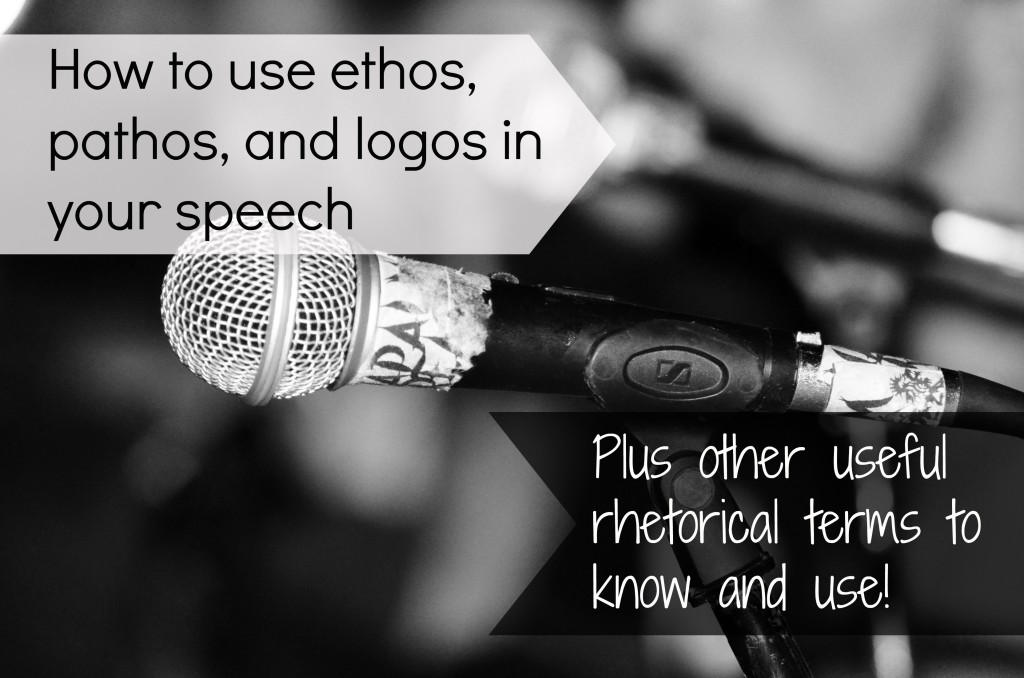Check out the rest of this mini series if you've missed the previous sessions!
Part One: Introduction to Public Speaking
Part Two: Preparing and Researching the Speech
Part Three: How to Design Your Speech
Part Four: Tips on Speech Delivery
Rhetorical Appeals
There are three main rhetorical appeals: ethos, logos, and pathos.
Ethos refers to the speaker's credibility. You can reinstate your ethos by describing your personal experience with the topic that you're discussing and how you might have some kind of expertise in the field. If you yourself do not have much experience, you can appeal to ethos by demonstrating that you have spoken to other experts on the topic.
Positioning yourself within the subject matter helps people to understand why they should bother listening to you in the first place.
Logos is the appeal to logic. This includes statistics and factual information. Scientific explanations are usually seen as more credible than speculation, so logos appeals to rational minds. It is best to emphasize logos when you are facing a tough crowd, or one which you will need to persuade of your position.
Pathos appeals to the audience's emotions. Pathos is very difficult to deal with and should not be relied upon too heavily, as it may be interpreted as fear mongering, whiny, or too distanced from reason. Pathos should therefore be used to reinforce your ethos and logos, rather than be the main appeal overall.
More Rhetorical Terms to Think About
Kairos:
This is an opening or an opportunity. Sometimes you yourself will deliberately make the opening---such as pausing in the middle of your speech to allow your words to sink in. Sometimes your opposition will say something unexpected, and there will be this "opening" in which you respond. You can take advantage of it to reinstate your point.
Barack Obama made excellent use of this when he was recently accused, in the middle of a speech, "You lie!" The crowd gasped, and then Obama responded, when the audience quieted for a moment, with "That is not true." He handled the situation most admirably.
Exigence:
This is some kind of urgency, need, or lack that needs to be addressed. It is good to think about exigence when you are constructing your speech and choosing the topic. What will people be curious about learning more about? What knowledge do they lack? What is important enough that it should be presented in front of an audience?
Order:
This refers to the pattern of organization in your speech.
The five main types of organization are:
- Spatial Order (the main points follow a directional pattern ascending or descending).
- Chronological Order (the main points follow a time pattern).
- Causal Order (the main points show a cause-effect relationship).
- Problem-Solution Order (the main points deal with the existence of a problem and present a solution to the problem).
- Topical Order (the main points divide the topic into logical and consistent subtopics).
Transitions:
These are the links between your points within your speech so that the presentation operates smoothly. Transitions include phrases such as "now that we have seen..." or "not only does..." or "this brings me to..." and so on.
Refutio:
These are the possible objections to the perspective you present in your speech. It is best to think ahead of time what possible objections people might make against your views, and to consider counterpoints against their arguments.
By anticipating possible objections, you will learn more about your topic and be able to demonstrate to your audience just how knowledgeable you are and how much you have thought through your position, thus making your opinion more valid.

[…] Part Five: Rhetorical Appeals […]